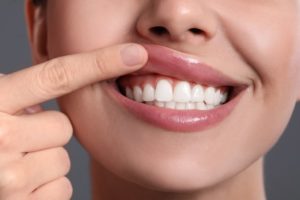
One of the most cost-effective and transformative cosmetic treatments available is dental bonding. With the power to take damaged teeth and protect and repair them to look whole and symmetrical, it’s no wonder why this is such a common choice among patients suffering from chipped, cracked and gapped pearly whites. The one concern many people want to resolve before committing to this treatment, though, is how long they can expect the results to last. Just like your natural teeth, wear-and-tear will impact your bonding, and they’ll likely need to be replaced. Read on to learn about how you can extend their lifespan and enjoy your results for as long as possible.
Is Dental Bonding Permanent?
Dental bonding doesn’t offer permanent results, although it’s long-lasting. With an average lifespan of between five and seven years, this cost-effective, minimally-invasive treatment is an excellent option for patients who are looking to repair mild to moderate dental damage. Bad habits and poor oral hygiene can drastically reduce the lifespan of your results, so be sure to take the proper measures to preserve your new and improved smile.
Factors That Can Influence the Lifespan of Dental Bonding
If you have certain oral habits, it’s best to consider them before getting dental bonding so you can take the proper steps to address them. Some common conditions and factors that can impact the lifespan of your bonding include:
- Bite Problems: Overbite, underbite, and crossbite can place additional strain on certain teeth when you bite down or chew food. This can lead to excessive wear-and-tear on your dental bonding that causes it to fail faster than it would otherwise.
- Teeth Grinding: If you have bruxism, which is the nightly grinding and clenching of your teeth, your dental bonding will be impacted by the force of this habit. Investing in a cushioning nightguard can help preserve the bonding, but if an underlying cause is leading to your bruxism, investing in having that treated will go a long way.
- Location of the Bonding: Dental bonding located towards the back of the mouth, where you chew your food, may last a shorter amount of time than bonding on your front teeth.
Maintaining Your Results
The best way to push your bonding lifespan past seven years is to take preventive measures. These can include:
- Maintaining good at-home oral hygiene.
- Avoiding biting down on hard objects and items, like chewing ice, biting your fingernails, and chewing on pencils and pen caps.
- Prevent staining by steering clear of foods like red wine, coffee, and black tea.
- Quit smoking and using tobacco products.
- Schedule your bi-annual checkups and cleanings with your dentist.
By investing time into your smile and taking these daily measures seriously, you’ll likely be able to increase the lifespan of your dental bonding and get the most out of your investment in cosmetic dentistry.
About the Practice
At Meadowbrook Dental Care, our team is led by five experienced and skilled dentists with a range of specialty interests. Due to the vast amount of knowledge on our team, we’re able to provide every service from routine checkups and cleanings to more advanced cosmetic treatments, including dental bonding, Invisalign, and veneers. With a goal to improve patients’ confidence and health, they’re dedicated to providing personalized care to everyone who enters through their practice doors. For questions or to schedule a consultation, visit Meadowbrook Dental Care’s website or call 516-284-1234.
